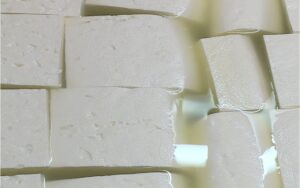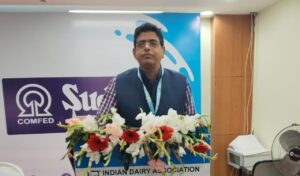The antibiotics used in veterinary medicines belong to six major groups: Beta-lactams (eg: penicillin), aminoglycosides (eg: gentamycin), tetracycline (eg: oxytetracycline), macrolides (eg: erythromycin), quinolones (eg: fluroquinolone) and sulphonamides (eg: trimithropin). Any of the drugs belonging to these groups can appear in milk.
In 2016, this author had the opportunity to collaborate with the Food Safety and Standards Authority of India’s (FSSAI) team in designing and implementing the National Milk Adulteration Survey. The scope of the survey expanded in 2018 to include contaminants, reflecting a more comprehensive approach to ensuring milk safety.
The survey showed that 77 (out of 6,432) samples, or 1.2 per cent of the samples, had residues of antibiotics above the permissible limits. Among the top three states with the highest levels of antibiotics residues were Madhya Pradesh (23 out of 335 samples), Maharashtra (9 out of 678 samples) and Uttar Pradesh (8 out of 729 samples). Only one raw milk sample in Kerala was found to contain pesticide residue above the permissible level.
A similar survey was conducted by FSSAI in 12 states / Union territories of India during the post-Covid-19 period in 2022 when the the country was also witnessing a Lumpy Skin Disease outbreak.
The milk samples were tested for all the 26 antibiotics specified in Food Safety and Standards Regulations for milk & 15 as specified for food commodities other than milk, according to the authors of the report. “Only 0.4 per cent (3 / 798) raw milk samples from the two States (two samples from Tamil Nadu and one from Karnataka) were reported to contain antibiotics specified for milk, namely sulfadimidine in one sample and meloxicam in two samples more than the prescribed limit.”
Considering a total production of 670 million litres of milk per day in current times, the level of 1.2 per cent contaminated milk with antibiotics accounts for around 8 million litres of milk per day, thety added.
Assuming per capita availability of milk as consumption, around 180 million persons are consuming this milk on a daily basis, which is almost equivalent to the whole of Netherlands. We need to understand this problem and find appropriate solutions to counter the issue.
Driving factors
Primary milk production area is the major contributor of contaminants like drug residue or aflatoxin M1. There has not been any direct intervention by the food regulator FSSAI in this part of the dairy value chain since the beginning.
However, after the 2018 survey, a scheme of testing and inspection was introduced by the regulator for all plants involved in processed liquid milk sales.
This intervention introduced the testing protocol with frequency for both raw milk sources as well as finished goods with frequency. The six monthly reports submission to the food regulator also mandated regular testing of contaminants.





